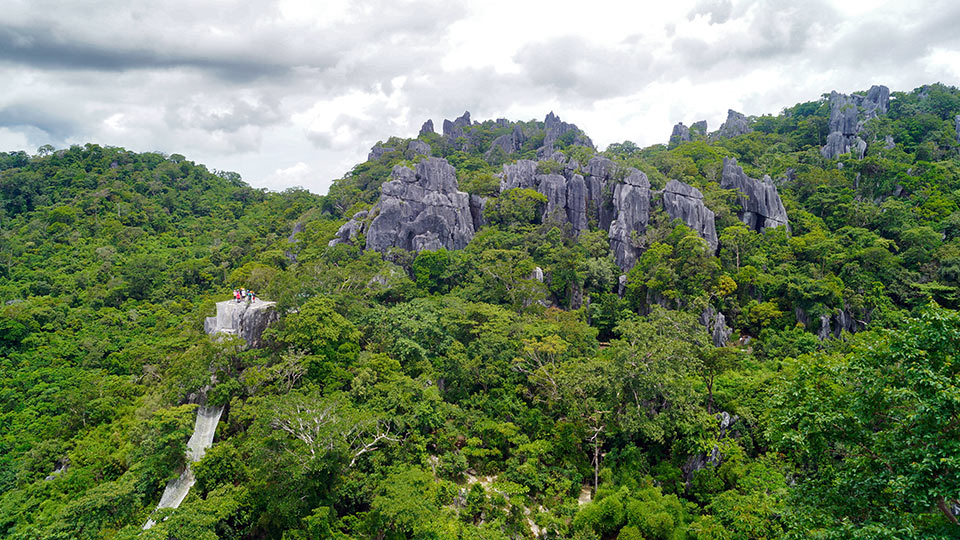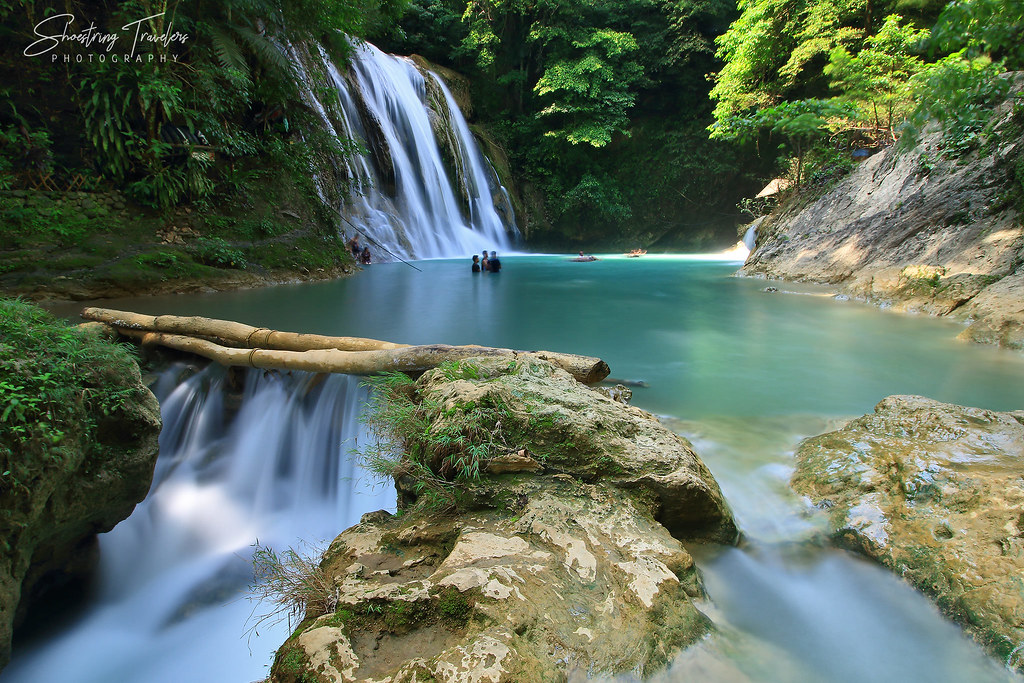Staying mostly at home for more than 7 months is perhaps the ultimate test of sanity for these restless travelers. So recently, when the lockdown in the country’s National Capital Region (NCR) was relaxed somewhat, we needed no further bidding to go on a trip outside the metro.
Our first foray was to Tagaytay overlooking Taal Lake and Volcano but with a thick fog covering the lake and nearby tour spots still closed all we could do was to have lunch here and coffee at nearby Amadeo town. A week later, and still longing for a breath of fresh air, we were off to Antipolo, Rizal, and the foot of the Sierra Madre mountain range.

Driving along the Marilaque Road we gradually eased out of the metropolis and into hilly terrain. At Boso-Boso in Antipolo we stopped at a newly-opened Shell gas station near a resort and was delighted to discover a view deck at the back of the station’s grocery. The landscape of fog-blanketed hills framed by verdant woods was a sight to treasure for these folks held back within city walls during this lengthy pandemic siege.

We drove on to Baras and into Tanay town hoping to visit Treasure Mountain and its even more remarkable sea of clouds. Lo and behold a checkpoint stopped us just past the Tanay boundary. Local authorities politely informed us that since we did not have the requisite travel documents we had to turn around the way we came. A rather disappointing turn of events but we still appreciated the chance to relish the change in scenery and escape the humdrum routine of city life.
This unexpectedly short trip had us reminiscing about our previous visits to this often overlooked area. Rizal is actually our home province: Leo is a native of Pateros and Nina of Caloocan City. Both municipalities were originally part of Rizal until they were officially included in Metro Manila in 1975 (it was later coined the National Capital Region in 1978). We did not consider Rizal as a destination until just about 6 years ago when we realized that most of the province – especially the central and northern sections – are hilly and mountainous and contain several interesting eco-tourism destinations.
Antipolo

Antipolo is very much a city but holds some fascinating destinations on the drive up the Marilaque Highway going east or down the Manila East Road along the shores of the Laguna de Bay. Hinulugang Taktak, the iconic waterfall of this city, continues its rehab from its sorry state years ago and although it’s not swimmable it’s at least a remarkable sight.

Also within Antipolo is the Pinto Art Museum with its large collection of works housed in six galleries as well as an indigenous arts museum and a sculpture garden. These galleries are devoted mostly to contemporary Philippine art. We toured this place for more than 3 hours and still missed a couple of attractions. Antipolo has plenty of dining options including those on a ridge overlooking the nation’s capital. In his younger days Leo recalls going at times with his family to the Antipolo Cathedral which attracts millions of pilgrims annually. But what we often visit while passing this city one the way home are its many stalls selling cashew nuts.
Baras

Driving past Antipolo on the Marilaque Highway, we would encounter wooded sections by the road and the highlands of Baras. Inside the Palo Alto Leisure and Residential Estates in Brgy. Pinugay is a surprise destination: a waterfall that continues on as a stream down a steep and rocky slope resulting in a series of small cascades.

Baras actually has a number of destinations that we have yet to visit including the 17th century-era St. Joseph Church – the oldest and most notable landmark in town – and the Masungi Georeserve which lies along the Marilaque Highway. This conservation area is set amidst a landscape of karst formations and includes a hiking trail that takes adventurous visitors to hanging bridges, a giant rope hammock, caves, viewing decks and a metal spider web platform atop the karst rocks.
Tanay
The Marilaque Highway continues its hilly climb to the upland sections of Tanay where a treasure trove of eco-tourism destinations awaits visitors. The most popular destination here is the Daranak Falls in Barangay Tandang Kudyo. Tucked away in a forested area at the foothills of the Sierra Madre, this waterfall was the recipient of efforts by the local government to preserve its clean waters, beautiful turquoise catch basin and green surroundings.

In the same area and just a short uphill trek from Daranak is Batlag Falls. The lesser-visited falls is not as conducive to swimming as the former but with its two cascades and turquoise pools, Batlag is more scenic and tranquil than Daranak. Batlag and Daranak, however, are just two of the several waterfalls in Tanay’s highlands. There are several more in the hills and forests northeast of Tanay proper including Laiban Falls, Kay-Ibon Falls, Kinabuan Falls and the 8 waterfalls of Mts. Cayabu and Maynoba.

As a largely mountainous town, Tanay holds several peaks that are suitable for trekking. There’s also Nagpatong Rock, a unique limestone formation at the foot of Mt. Masungki which may be reached by hiking and scaling cliffs. Daraitan and Tinipak Rivers are also located in these parts and a favorite of trekkers, particularly the latter which includes beautiful white marble rock formations. If you’re not willing to go on a strenuous, mountain-climbing hike but still want to enjoy the town’s mountain scenery you can head up to Treasure Mountain for a view of the Sierra Madre highlands engulfed in a sea of clouds.
Pililla

Near the southeastern edge of Rizal just before the boundary with Laguna province is the town of Pililia. Here the hills gradually ease into the lowlands along the shores of Laguna de Bay. On the hills above those lowlands is the Pililla Wind Farm and its series of windmills, the town’s most famous destination.
With the current quarantine still in effect in Rizal province, many of these destinations are closed to tourists although some are beginning to open up to visitors while following quarantine protocols. Daranak Falls for instance requires a certification from the local government unit (barangay) of a visitor before he or she can enter the premises. This is in addition to wearing facial masks and other precautionary measures. We’re curious just how tourism in these parts and in the rest of the country will look like in the next year or so but it now seems more than ever that travel will not be what it once was.













Breathtaking would be my one word to describe the place. This is now included in my bucket list…
Thanks! There’s actually a lot more destinations especially in Tanay and Rodriguez than what we featured here. If not for the pandemic we would have visited some of them by now.
I’m sure you would have been to so many places if not because of this pandemic…enjoy anticipating for now 😆
Thanks for sharing your diaries on these places. Breath of fresh air from the “pandemic siege” indeed.
Less trodden scenic routes that are actually not too far.
Your’re welcome Nes. Yes there’s actually a lot of scenic destinations not that far from our place if only we took the time to scout around. This pandemic is forcing that.
Beautiful! So nice to see travel posts again. Come to Bataan – it is open for travelers now.
Thanks Markus and Micah! Bataan sounds good. We haven’t been there in 3 years.
Oh, my goodness! Such wonderful landscapes,especially the waterfalls. 😊
Thanks Irene!
Wonderfully taken photographs.
Thanks Koji!